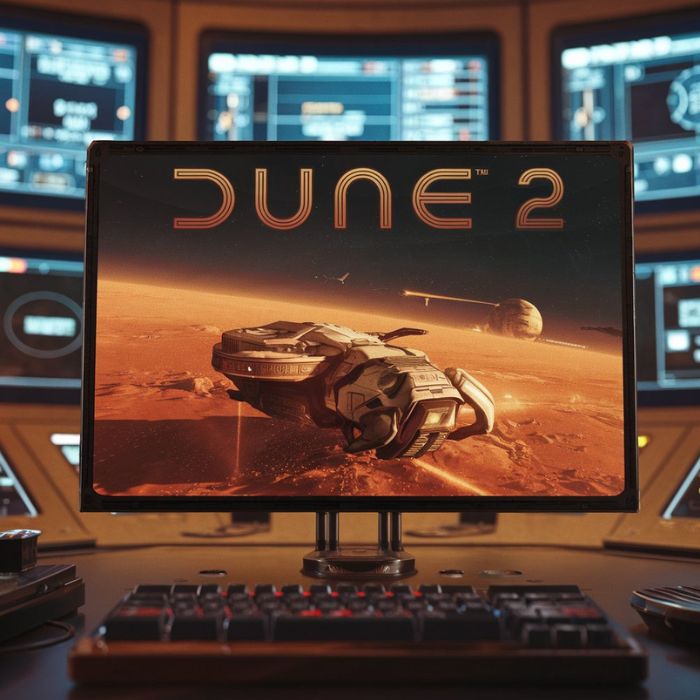Overview
In the realm of video games, few titles have made as significant an impact as Dune 2. Released in 1992, this game didn’t just jump onto the scene; it kicked down doors and reshaped how we think about real-time strategy (RTS) gaming. Based on Frank Herbert’s iconic sci-fi universe, Dune 2 transported players to the desert planet of Arrakis, where they commanded armies, harvested resources, and waged epic battles for control over the precious spice melange.
But what truly set Dune 2 apart? Its innovations went beyond a captivating story and immersive setting. This groundbreaking title introduced mechanics that would become staples in modern gaming. As we dive into its legacy today, prepare to explore not just a game but a phenomenon that changed everything for both developers and gamers alike.
The impact of Dune 2 on the gaming industry
Dune 2 marked a turning point in the gaming landscape. Released in 1992, it laid the groundwork for real-time strategy (RTS) games, introducing mechanics that would become standard.
Players managed resources, built bases, and commanded units in real time. Dune 2 was groundbreaking at a time when turn-based strategies dominated. The dynamic gameplay captivated audiences and drew them into its immersive world.
Its blend of storytelling with strategic depth created an engaging experience rarely seen before. Dune 2 allowed players to choose factions with unique traits, adding layers of complexity to each encounter.
The game’s success rippled through the industry. Developers took note of its innovative approach, leading to a surge in RTS titles throughout the ’90s and beyond. Dune 2 didn’t just influence gamers; it shifted how developers approached game design entirely.
Comparison to other games at the time
Dune 2 emerged in a landscape defined by limited strategy games. Titles like Command & Conquer were on the horizon, but Dune 2 was ahead of its time.
While other games often relied on simple mechanics and linear gameplay, Dune 2 introduced real-time strategy elements that felt fresh and innovative. Players had to manage resources, build bases, and engage in battles—all in real-time.
Compare this to traditional turn-based games of the era; they lacked the immediacy that Dune 2 offered. It pushed players to think quickly and adapt their strategies on the fly.
Moreover, many contemporaries focused solely on combat without incorporating complex storytelling or world-building. Dune 2 seamlessly blended narrative with gameplay, drawing players into its rich universe inspired by Frank Herbert’s iconic series. This made it stand out among its peers during a pivotal moment for video gaming.
Innovations in gameplay and graphics
Dune 2 introduced groundbreaking gameplay that changed the RTS landscape. Players managed resources, built bases, and commanded units in real-time. This blend of strategy and action was revolutionary.
The game also featured a top-down perspective that allowed for strategic planning. Unlike many contemporaries, Dune 2 encouraged players to think multiple steps ahead. It wasn’t just about combat; it was about controlling the environment.
Graphically, Dune 2 showcased vibrant landscapes and detailed unit designs. The iconic sandworms added an exhilarating element of danger not seen before. Each faction had distinct visual styles that enhanced immersion.
Animations set a new standard too—units moved fluidly across the screen during combat scenarios. With its dynamic visuals and engaging mechanics, Dune 2 created an unforgettable experience that left players eager for more challenges.
Influence on future games and genres
Dune 2 didn’t just create a ripple; it sent waves through the gaming landscape. Its mechanics laid the groundwork for real-time strategy (RTS) games that followed. Developers took notice and began to incorporate similar elements into their titles.
The game’s resource management system was groundbreaking. Players had to gather spice while managing units, which has since become a staple in many RTS games. Titles like Command & Conquer and Warcraft owe much of their design philosophy to it’s innovative approach.
Moreover, It popularized base-building mechanics within its genre. This influence is evident in countless modern games that require players to construct and upgrade facilities strategically.
Its success inspired an entire generation of game designers, encouraging them to explore complex narratives and immersive worlds—elements we now see as essential in gaming today. The legacy continues, shaping genres far beyond its initial release.
Legacy of Dune 2 for modern gamers
Dune 2’s legacy resonates deeply within modern gaming. Its pioneering spirit laid the groundwork for real-time strategy (RTS) games that followed. Players today often engage with mechanics influenced by this classic, from resource management to base-building.
The game’s emphasis on strategic decision-making has become a staple in contemporary titles. Gamers find themselves immersed in complex narratives and tactical choices reminiscent of their experiences.
Moreover, its immersive world-building and lore continue to inspire developers. Franchises like Starcraft and Command & Conquer owe much to the innovations introduced by Dune 2.
Modern gamers appreciate the intricate balance between combat and strategy that was first explored here. Each new RTS release pays homage to those early days, reminding players of how far they’ve come since then.
Final Thoughts
The lasting impact of Dune 2 on the gaming world
Dune 2 left an indelible mark on the gaming landscape. Its innovative design reshaped how strategy games were developed and played. The mechanics introduced in this set new standards for resource management, unit control, and base-building.
Gamers who experienced it often reflect on its exciting gameplay and immersive world. It sparked a love for real-time strategy that continues to resonate today. Titles like Command & Conquer, StarCraft, and Age of Empires owe a debt to this groundbreaking classic.
Decades later, modern gamers can still appreciate the foundational elements established by Dune 2. Its legacy lives on through countless sequels and adaptations across various platforms. Whether you’re strategizing your way to victory or exploring its rich universe anew, this remains a significant part of gaming history.
Every click echoes with nostalgia for those who played it during its heyday. For many players today, understanding where their favorite genres originated is essential for appreciating the evolution of gaming as we know it now. So much has changed since then; yet the essence of what made it special endures in both spirit and gameplay mechanics—an enduring testament to its influence within the vast realm of video games.











